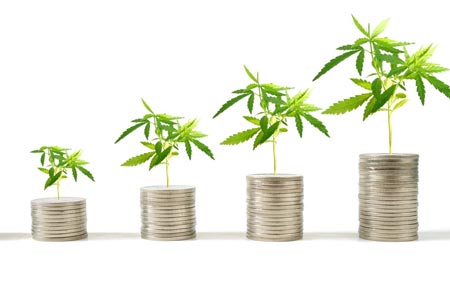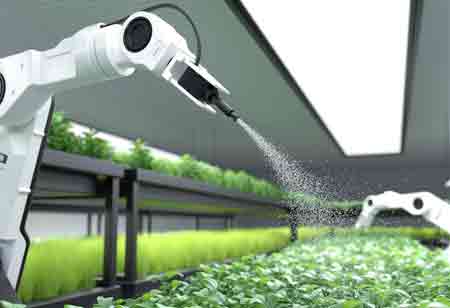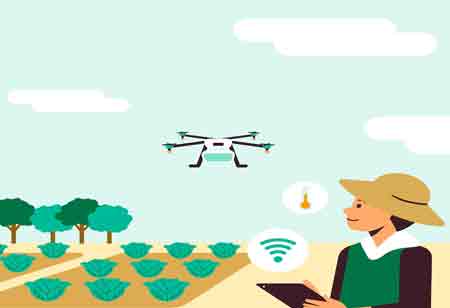Thank you for Subscribing to Agri Business Review Weekly Brief
Indoor Farming Meets Consumer Needs for Safe, Sustainable Produce
Over the years, the perception of fresh produce has been closely associated with vast sunlit fields. However, a notable transformation is occurring in European agriculture as indoor-grown

By
Agri Business Review | Tuesday, April 23, 2024
Stay ahead of the industry with exclusive feature stories on the top companies, expert insights and the latest news delivered straight to your inbox. Subscribe today.
The European indoor farming industry, utilising renewable energy, LED lighting, and vertical farming, is gaining interest due to transparency, innovation, and local availability, potentially becoming a staple in European cuisine.
Fremont, Ca: Over the years, the perception of fresh produce has been closely associated with vast sunlit fields. However, a notable transformation is occurring in European agriculture as indoor-grown greens gain prominence in supermarkets and households. This editorial delves into the evolving consumer outlook on indoor farming and the drivers behind the increasing demand for locally produced, sustainable crops in Europe.
Shifting Perceptions
Early views on indoor-grown food often harboured doubts regarding taste, nutritional value, and environmental impact, shaped by scepticism among consumers. However, recent trends reveal a substantial shift. A study published in 2023 on ResearchGate, examining consumer sentiments in the UK and Germany, highlighted a positive reception toward indoor farming, specifically vertical farming. This newfound interest can be attributed to several factors.
Addressing Concerns through Transparency and Innovation
The European indoor farming sector has proactively tackled consumer apprehensions. Greater transparency regarding production methods, emphasising renewable energy use and minimal water consumption, resonates well with Europe's environmentally conscious populace. Technological strides have also been pivotal. LED lighting, for instance, enables precise control over growth conditions, potentially enhancing the nutritional profile of select crops.
Local Sourcing and Year-Round Accessibility
With Europe's urban population seeking convenient access to fresh, premium-quality produce, indoor farms, often located near urban hubs, fulfil this demand. Vertical farming, a technique utilising stacked layers, maximises output in limited space, making it ideal for urban settings. This localised approach minimises transportation expenses and environmental impact, appealing to sustainability-minded consumers.
Emphasising Safety and Reliability
Concerns about food safety in traditional agriculture, such as pesticide residues and foodborne outbreaks, propel consumers toward alternative options. Controlled indoor environments mitigate contamination risks, offering a safer choice. Moreover, indoor farms are less vulnerable to weather fluctuations, ensuring a consistent fresh produce supply throughout the year.
Factors Fueling the Indoor Produce Revolution
Several compelling factors drive European consumers' embrace of indoor-grown produce. Firstly, sustainability concerns are paramount, with an increasing emphasis on environmental consciousness. Indoor farming addresses these concerns by significantly reducing water usage, minimising reliance on pesticides, and cutting down transportation emissions, all of which are significant selling points. Additionally, the availability of year-round produce is an essential advantage of indoor farming. By providing complete control over growing conditions, indoor environments ensure consistent production irrespective of seasonal variations, guaranteeing access to fresh, locally sourced produce even in adverse weather conditions.
Moreover, the appeal of locally sourced food is growing, fueled by the "know your farmer" movement. Indoor farms, often located closer to urban centres, offer transparency and a direct connection with the food source, catering to this consumer preference. Finally, technological advancements, particularly in LED lighting and vertical farming techniques, play a pivotal role. These innovations optimise yields, enhance taste profiles, and minimise energy consumption, further bolstering the appeal and viability of indoor farming methods.
Looking Ahead: Cultivating Trust and Transparency
While consumer perceptions are evolving, there's scope for further enhancement. Educating consumers about the merits of indoor-grown produce, especially its flavour and nutritional richness, is vital for sustained acceptance. Fostering fair pricing and transparent labelling practices will bolster trust and transparency within the industry.
The emergence of indoor-grown produce in Europe mirrors a shifting consumer landscape. The emphasis on local, sustainable, and safe food production aligns seamlessly with European values. As technology progresses and consumer awareness deepens, indoor-grown greens stand poised to become a staple on European tables, heralding a more secure and sustainable future for food production.





